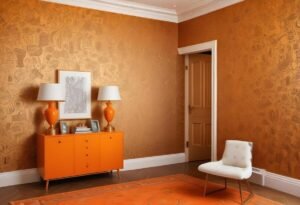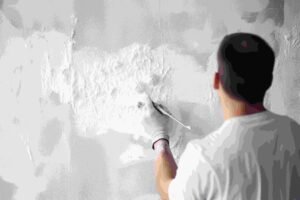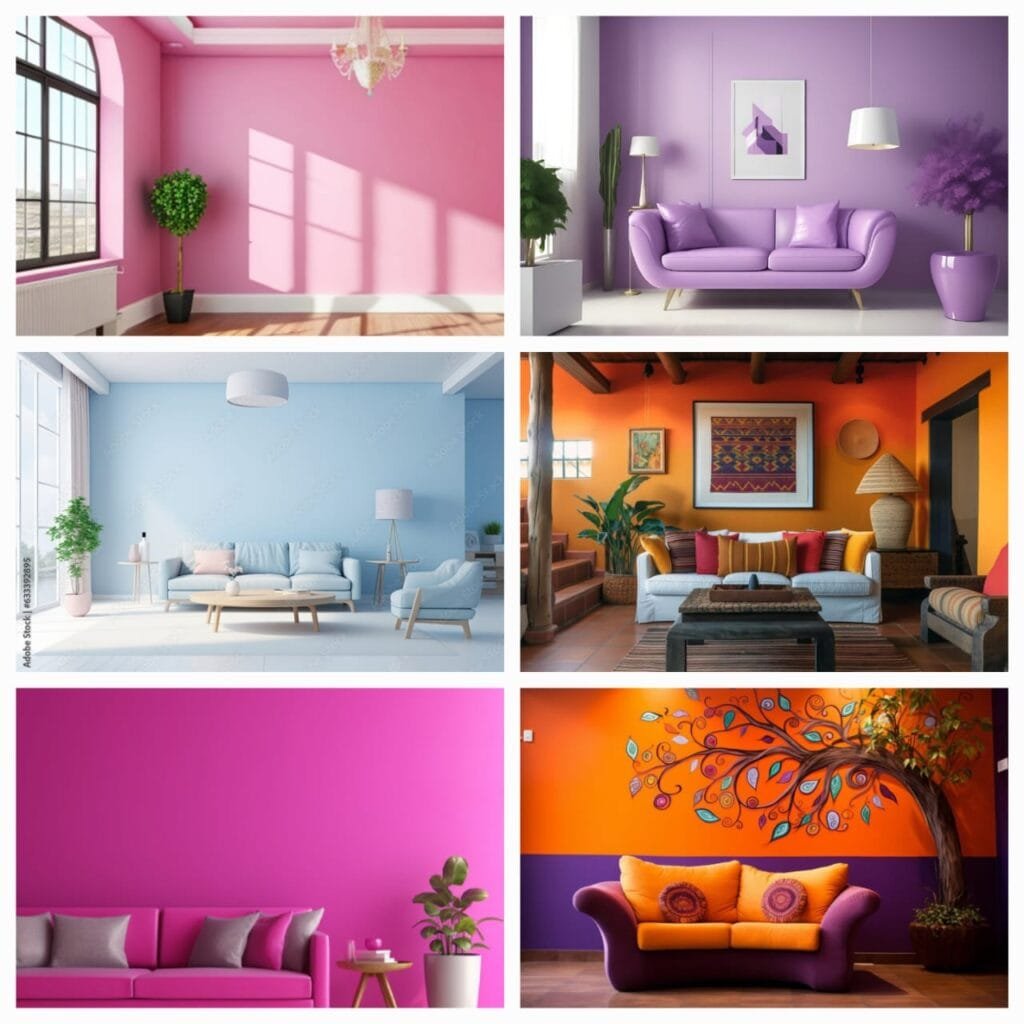Decorative Coatings
Introduction to Decorative Coatings
Decorative coatings represent a sophisticated evolution from standard paint, designed specifically to add distinctive character and refined aesthetics to living spaces. Unlike regular paint, which serves primarily as a uniform, protective layer for walls and surfaces, decorative coatings bring a nuanced, artistic dimension to interior decoration. These specially-formulated products can create a variety of stunning visual effects, textures, and finishes that transform ordinary walls into extraordinary focal points.
The primary purpose of decorative coatings is to infuse spaces with personality and elegance, typically unattainable with conventional paint. From metallic sheens and marble-like appearances to rustic and distressed surfaces, the possibilities are virtually endless. Homeowners and interior designers alike are increasingly turning to decorative coatings to craft unique environments that reflect individual taste and style.
This growing trend towards using decorative coatings highlights a broader shift in interior design that underscores the value of personal expression and sophisticated finishes. Whether it’s a subtle pearlescent glow or a bold, textured pattern, such coatings provide the flexibility to achieve bespoke, high-end looks tailored to each living space’s specific needs and ambiance.
As we delve deeper into the world of home paint decorative coatings, you will discover various types, application techniques, and the transformative effects these coatings can have on your home. With the rise of interior design trends favoring detailed, artisanal finishes, decorative coatings stand out as a vital tool for homeowners aiming to elevate their home’s aesthetic appeal.
Choosing the right decorative coating can significantly transform your living space, offering a range of options to suit various aesthetic preferences and functional needs. Here, we’ll explore some popular types of decorative coatings, each with unique characteristics and applications.
Faux Finishes
Faux finishes aim to replicate the look of high-end materials like marble, wood, or stone without the associated costs. These finishes are versatile and can be customized to suit different design styles. For instance, Venetian plaster delivers a smooth, polished marble effect suitable for sophisticated interiors, while a wood grain faux finish can add rustic warmth to any room.

Textured Paints
Textured paints offer a tactile surface that can add depth and interest to your walls. These coatings can mimic the appearance of materials such as stucco or brick, often used to conceal imperfections on the wall surface. Textured paints are ideal for creating accent walls or adding an architectural element to a space. They are particularly effective in rooms where a more rustic or industrial aesthetic is desired.

Metallic Paints
Metallic paints incorporate tiny metallic particles that create a shimmering effect, adding elegance and a sense of luxury. They are available in various shades, including silver, gold, bronze, and copper. Metallic paints are excellent for creating focal points, such as feature walls or highlighting architectural details like moldings and trims. These coatings can dramatically catch the light, making rooms appear more expansive and vibrant.
Chalkboard Paints
Chalkboard paints turn any wall into a writable surface, making them a popular choice for kitchens, kids’ rooms, and home offices. This type of paint allows you to personalize your space with drawings, notes, and lists that can be easily changed. Besides their functional utility, chalkboard paints have a matte finish that can add a touch of contemporary style to your decor.
By understanding the characteristics of each type of decorative coating, you can make an informed decision that aligns with your design vision and practical needs, enhancing the overall ambiance and functionality of your living space.

Choosing the Right Decorative Coating
Selecting the appropriate decorative coating for a room or surface is a pivotal aspect of transforming a living space. Various factors must be taken into account to ensure that the final choice not only enhances the room aesthetically but also performs well under specific conditions. Firstly, the room’s function is a key consideration. High-traffic areas such as hallways and kitchens benefit from durable, washable coatings, whereas bedrooms and living rooms may afford more delicate finishes that emphasize comfort and style.
Existing decor plays an integral role in determining the suitable decorative coating. It is essential to harmonize the coating with the room’s current furnishings, fabrics, and artwork to create a cohesive look. For instance, a minimalist space might benefit from a matte or satin finish, which offers a subtle elegance, whereas a more eclectic environment could be enlivened with a glossy or pearlescent finish.
Lighting conditions within the space are another critical element. Rooms flooded with natural light can handle darker, bolder colors without feeling oppressive, whereas smaller, dimly-lit rooms may benefit from lighter shades that reflect light and give the illusion of space. Additionally, considering the direction of the room’s windows can affect how colors appear at different times of the day.
Personal aesthetic preferences should not be neglected. Whether one favors contemporary, classic, modern, or rustic styles, there is a decorative coating to complement any taste. It is advisable to collect samples of various coatings and apply small patches to the wall. This allows observing how the coatings dry and how they look under different lighting conditions. Sampling is a valuable step to avoid costly mistakes and ensure satisfaction with the final result.
In making the final decision, all these factors—room function, existing decor, lighting conditions, and personal style—should be meticulously considered. Appropriate sampling and testing will aid in selecting a decorative coating that not only beautifies your space but also complements the overall design and functionality of your home.
Preparation Before Application
Proper surface preparation is crucial when applying decorative coatings to ensure a professional and long-lasting finish. The first essential step is thorough cleaning. Dirt, grease, and other contaminants can hinder the adhesion of the paint, so it is important to clean the surface using soap and water or an appropriate cleaner for more stubborn marks. Once cleaned, allow the surface to fully dry.
Following cleaning, inspect the area for any damage. Cracks, holes, or uneven areas will require repair. Using a filler, patch imperfections and smooth them out with sandpaper once dry. This creates a uniform surface that will help the decorative coatings adhere better and look more polished.
After repairs are complete, the next step is to prime the surface. Priming is essential, particularly when dealing with new drywall or surfaces that have not been previously painted. A primer creates a stable base for the topcoat, improving its adhesion and durability. It also helps in covering stains, providing a uniform color base for the decorative coatings.
Ensuring the right environmental conditions for application is equally important. Ideal conditions typically include moderate temperatures and low humidity. High humidity can slow down the drying process, leading to inconsistent results. Moreover, it is crucial to work in a well-ventilated area to avoid the accumulation of paint fumes, which can be harmful.
Each of these preparatory steps—cleaning, repairing, priming, and maintaining optimal conditions—plays a pivotal role in the final outcome. Skimping on any of these steps can compromise the finish and longevity of the decorative coatings. Therefore, a meticulous and systematic approach to preparation is the cornerstone of any successful home painting project. A well-prepared surface not only makes the application process smoother but also enhances the overall aesthetic appeal of your living space.

Application Techniques
Applying decorative coatings can transform any living space with a touch of creativity and a splash of color. Various techniques, including sponging, rag rolling, stenciling, and troweling, offer unique finishes that cater to diverse tastes and aesthetics.
Sponging
Sponging involves using a sea sponge to create a textured, layered look. Begin by painting a base coat and letting it dry completely. Dip the sponge into a contrasting or coordinating paint color, then dab it onto the wall in a random pattern. Rotate the sponge and vary the pressure to avoid uniformity. Necessary tools include a sea sponge, paint, and a paint tray. For best results, use light pressure and continually step back to assess the overall effect.
Rag Rolling
Rag rolling involves rolling a rag through wet glaze to produce a marbled effect. Start by applying a base coat of paint and allow it to dry. Mix glaze with a second paint color, then dip a rolled-up rag into the mixture. Lightly roll the rag across the wall in different directions to create the desired effect. Tools needed are a paintbrush, glaze, rag, and paint tray. Avoid overloading the rag with glaze; subtle layers yield a more dynamic finish.
Stenciling
Stenciling is an effective way to add detailed designs or patterns to your walls. Position the stencil on the wall and secure it with painter’s tape. Use a stencil brush or roller to apply paint over the stencil openings. Carefully remove the stencil before the paint dries to avoid smudging. Core tools include stencils, painter’s tape, stencil brushes, and paint. For crisp lines, use a small amount of paint and apply it in a dabbing motion.
Troweling
Troweling, used mainly for Venetian plaster and other textured coatings, involves layering material for a three-dimensional effect. Apply a base coat and let it dry. Using a trowel, apply a thin layer of plaster with a sweeping motion. After the first layer dries, add subsequent layers, burnishing the final layer for a polished look. Necessary tools include a trowel, plaster, and sandpaper. Key tips are to apply thin, even layers and to sand between coats for a smooth finish.
Regardless of the technique, patience, and practice are essential. Each method offers a distinctive appeal that can bring a personalized touch to your home decor, making your living space truly unique.
Maintaining Decorative Coatings
Maintaining the aesthetic appeal and structural integrity of your decorative coatings is essential to preserving the visual and functional benefits they provide. Regular maintenance ensures the longevity of these specialty finishes and helps you enjoy a vibrant, well-kept living space.
To start with, regular cleaning is paramount. Decorative coatings, whether applied in kitchens, living rooms, or exterior walls, should be kept free of dust and debris. A soft cloth or microfiber duster should be used to gently remove surface dirt, while more resistant grime can be tackled with a mixture of mild detergent and water. It is crucial to avoid abrasive cleaners and scrubbing pads, which can damage the delicate surface of the decorative coating.
Touch-up techniques are another vital aspect of maintaining decorative coatings. Over time, minor scuffs and scratches are inevitable, especially in high-traffic areas. For small imperfections, using leftover paint from the original application can seamlessly blend in the touch-up with the rest of the coating. Ensuring you have extra paint stored correctly is advisable for such occasions. For more significant damage, it might be necessary to repaint the affected section, making sure to follow the same application techniques used initially for an even finish.
Knowing when to consider reapplication can significantly impact the durability and appearance of your decorative coatings. The resilience of these surfaces varies depending on the type of coating used, as well as the environmental conditions it is exposed to. High-quality decorative coatings can last several years before any signs of wear and tear become apparent. However, exposure to direct sunlight, moisture, and temperature fluctuations can accelerate degradation. If the coatings start to fade, peel, or crack, it is a clear indication that a fresh application is required to restore its original beauty and protection.
Durability and resilience are key characteristics of different decorative coatings. For instance, epoxy and polyurethane coatings are known for their strength and resistance to chemical and physical damage, making them ideal for high-traffic areas. On the other hand, limewash and mineral paints offer excellent breathability and natural resistance to mold and mildew, suiting both interior and exterior applications.
By adhering to these maintenance practices, you can extend the life and appeal of your decorative coatings, ensuring they remain a vibrant and integral part of your home’s design.

DIY vs. Professional Services
When it comes to applying decorative coatings to transform your home, one of the primary decisions homeowners face is whether to undertake the project themselves or hire professional services. Each option has its unique set of advantages and challenges that need to be thoughtfully evaluated.
Cost is often a significant consideration. DIY projects can be more budget-friendly since you save on labor costs, which usually constitute a substantial portion of the total expense. The only monetary investment required is for materials and tools. However, it is crucial to factor in the potential for mistakes and the cost of correcting them, which can potentially offset initial savings.
Skill level and experience play pivotal roles in determining the quality of the outcome. Decorative coatings often require a keen eye for detail and specific techniques that may not be easily mastered by novices. While online tutorials and home improvement courses can provide some guidance, achieving a professional-grade result typically demands substantial hands-on experience. Therefore, if you are not confident in your painting and decorative skills, the DIY route might lead to a less than satisfactory finish.
Time investment is another critical factor. DIY projects often take longer to complete, especially for individuals with busy schedules. The preparation, execution, and cleanup phases can extend over several weekends or even months. Professional painters, on the other hand, are equipped with the experience and manpower to complete tasks more efficiently, often within a matter of days.
Furthermore, the complexity of the project should guide your decision. Simple repainting tasks might be manageable for a DIY enthusiast, but more intricate decorative coatings, such as murals, textured finishes, or multi-layer techniques, are best handled by professionals. They possess specialized tools and knowledge that ensure a high-quality and durable result.
In conclusion, choosing between DIY and professional services hinges upon evaluating your budget, skills, available time, and the project’s complexity. For straightforward tasks, DIY might suffice and be a rewarding endeavor. However, for intricate and demanding projects, seeking professional help is often the wisest choice to ensure a flawless and lasting transformation of your living space.
Inspirational Ideas and Trends
Home paint decorative coatings have evolved into powerful tools for injecting personal style and sophistication into living spaces. By employing contemporary trends and inspirational ideas, homeowners can turn ordinary rooms into extraordinary environments. One prominent trend is the use of metallic finishes. Metallic decorative coatings, such as gold, silver, and bronze, are being increasingly utilized to add a touch of glamour and luxury to walls, ceilings, and even furniture. They reflect light beautifully, creating a sense of depth and movement, making any space feel brighter and more dynamic.
Another significant trend is the application of textured coatings. These coatings can mimic natural elements such as concrete, stucco, or even fabric, providing a tactile experience that flat paint simply cannot achieve. Textured finishes can be used to create an accent wall that stands out, adding intrigue and personality to an otherwise bland room. A popular choice is the Venetian plaster technique, which imparts a polished stone appearance that’s both classic and modern.
Color blocking is an innovative approach that employs bold, geometric patterns to infuse energy and creativity into a room. It involves painting sections of a wall in contrasting colors, resulting in striking visual effects. This technique can be tailored to fit a variety of styles—from minimalist to eclectic—allowing homeowners to play with their creativity. Complemented with simple furnishings, color-blocked walls can become the focal point of any living space.

Additionally, eco-friendly coatings are gaining traction. As homeowners grow more environmentally conscious, they are increasingly opting for paints and coatings made from natural, sustainable materials. These not only reduce environmental impact but also contribute to healthier indoor air quality.
Experimentation is key when it comes to home paint decorative coatings. Mixing these ideas and incorporating them into your home can result in a space that truly reflects your personal style. Whether you opt for metallic finishes, textured designs, or bold color blocking, these trends offer a plethora of opportunities for creativity and customization.
